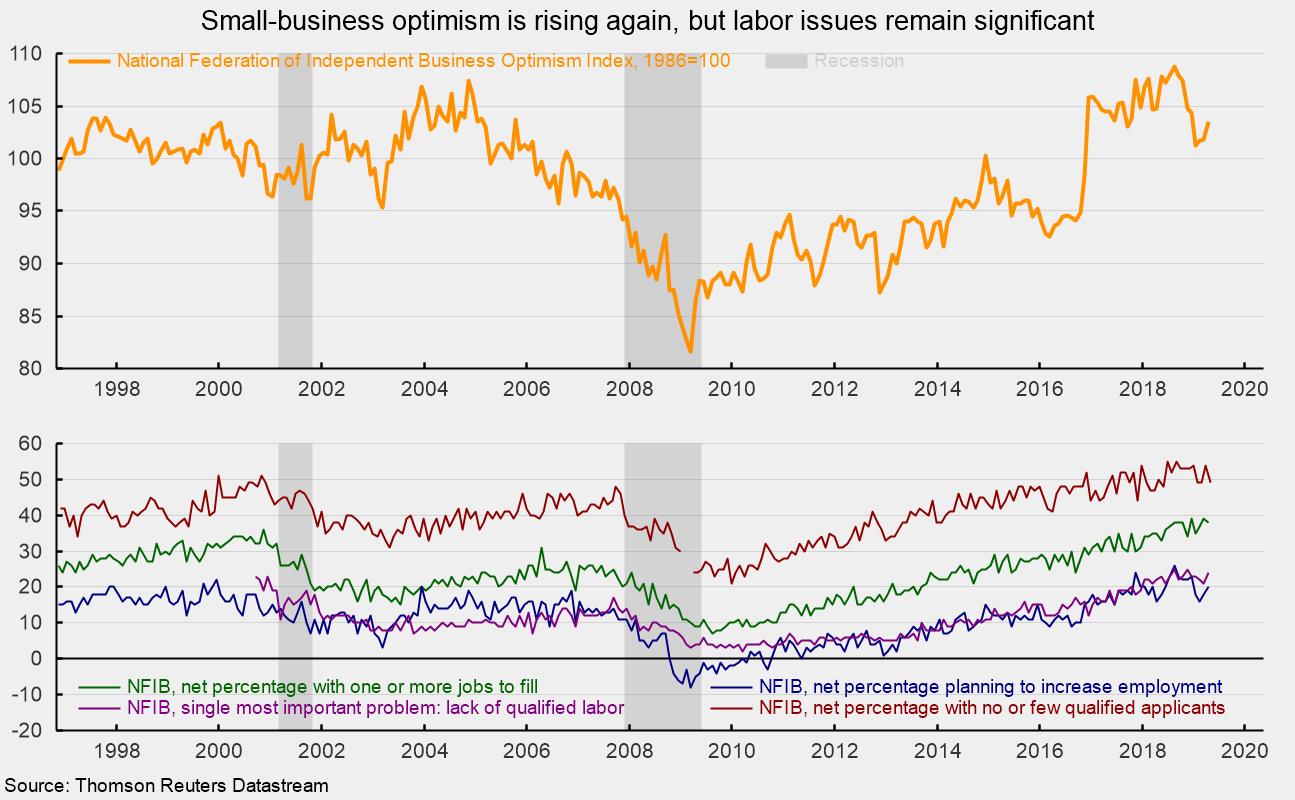Small-Business Confidence Rose in April
The small-business-optimism index from the National Federation of Independent Business rose slightly to 103.5 in April, up 1.7 points from 101.8 in March and 5.3 points below the all-time high of 108.8 in August 2018. The latest result extends a run of 29 consecutive months above 100, a very high figure by historical comparison (see top chart). Of the 10 individual indicators that make up the overall optimism index, 8 improved in the latest month while 1 pulled back and 1 was unchanged. The single most important problem among small businesses remains the declining quality of the available labor force, particularly in the context of an already-tight labor market and the very high percentage of firms with open jobs.
The general outlook remained positive as the percentage of respondents believing now is a good time to expand came in at 25, up from 23 in March. The net percentage of respondents expecting better economic conditions (“better” minus “worse”) came in at 13, up from 11 in March but still high compared to negative numbers from 2016. A net 20 percent expect higher sales over the coming months while a net 9 percent report higher sales for the most recent three months versus the prior three months.
The percentage of firms planning to increase employment rose to 20 percent from 18 percent in March. A near-record 38 percent (versus a record 39 percent) of firms report having openings they are not able to fill at the moment (see chart). At the same time, the percentage of firms reporting few or no qualified applicants for job openings was 49 percent, down from 54 percent in March and 6 points below the record 55 percent from June 2018. That combination in the labor market of healthy demand and weak supply has a net 34 percent of firms saying they have already increased compensation over the past three months while 20 percent intend to increase worker pay over the coming months.
The labor-market dynamics have made quality of labor the most important issue for small businesses. Among the 10 issues listed in the survey, quality of labor ranks first at 24 percent, just one point below the record 25 percent. Taxes were second at 16 percent, government regulation and red tape was third on the list at 15 percent, and taxes and cost/availability of insurance tied for third at 13 percent. Every other option had a response in the single digits with inflation at the bottom with just 1 percent and financing and interest rates with just 2 percent saying these two were significant issues. Inflation has been at the bottom of the list for several years, reflecting the slow pace of price increases over the current cycle.
Capital expenditures by small businesses also remain solid, with 58 percent of such businesses having made capital expenditures during the past six months. That is below the typical percentage in the upper 60s during the late 1990s but well above the mid-40s percentages during the last recession. Twenty-seven percent of firms have plans for capital expenditures over the next three to six months, the same as the prior month.
Overall, the survey suggests the small-business sector of the economy remains strong and views of the future remain upbeat.






